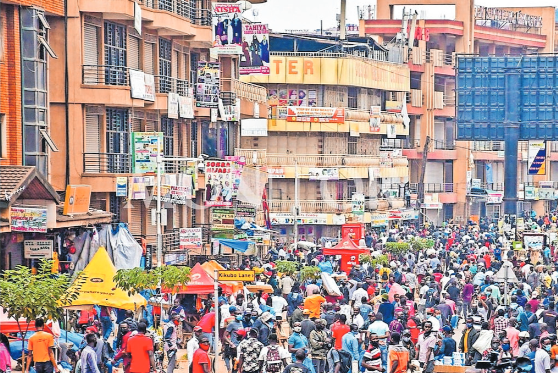Prime
Uganda can make $1.2 trillion green magic – for a song

Mr Charles Onyango-Obbo
What you need to know:
Already by 2045, Uganda would be unrecognisable, a green economy powerhouse, and the only thing it would be having in common with the current one is the name – if that too doesn’t change. It is doable. It would require a very different kind of politics; very different elections; a very different economic management; and investment into technology and science.
I don’t know how John Mary Odoy, chairman of Climate Action Network Uganda, managed to keep his cool in the article he wrote on these pages on February 2, 2021.
In one of the most understated titles of recent months, it read “Uganda’s forest cover under threat.” However, upon reading it, you realise that the forest cover is not under threat. We are way past that, and the natural forest cover is not just in peril, but to all intents and purposes, it is history.
“According to available reports, Uganda’s land surface had a forest cover of 24 per cent in 1990 and by 2015, this had shrunk to about 8 per cent, which is a loss of 16 per cent in a period of 25 years. At this rate, if no meaningful attention is given to this matter, Uganda will not have forests by 2028, especially the natural forests,” he wrote.
There are one hundred reasons why that should scare us. It is a problem I have had occasion to sweat over with environmental friends, but focussing on solutions. One of my environmental-economist friends doesn’t believe you can get enough people or African governments to do things on a scale that dramatically reverses deforestation and other environmental catastrophes. The only thing that will do is green; not the green of tree leaves, but the one of currency notes.
I asked whether a green bond (a debt instrument to fund projects that have positive environmental and/or climate benefits) could be issued to deal with the problem. He said it was worth considering. Realising it would take a while to get it together, I asked him last year how it could come together, assuming the [Covid-19] pandemic will have passed and spared enough of us, and that business is back to normal by 2025.
Assuming the wildly ambitious goal of covering 20 per cent of Uganda’s 241,037 square kilometres of land with forests within 12 years, he took an arbitrary requirement of 60 trees per citizen. With a population near 50 million by then, that would make a total of 3 billion trees within 12 years. Note that seedling maturity takes between five to seven years in the tropics. The Uganda government wouldn’t have to fork out any money. At 250 planted trees per acre, government would dedicate in lieu of its financial contribution, 50,000 square kilometres of land. Post-pandemic, the price of carbon dioxide will likely go up, but he worked on the 2018 price, which was US$10 per tonne per year.
Assuming it doesn’t change much, each tree would absorb 1 tonne over 40 years and earn $400 (nearly Shs1.5 million). With the core assumption that carbon prices will stay in the $8 to $10 range, and a seedling survival rate of at least 80 per cent, the cash flows per year from all matured trees would be $30 billion – far more than from oil, if it ever gets flowing. The total income expected from the 20 per cent forest cover in 40 years would be $1.2 trillion in net present value.
How would it work? The government would create a green bond and float it at three billion shares of, say, $100. It would sell it in a Green Equities market and recover $300 billion to execute project, growth seedlings, support green research, invest in some infrastructure, and pay other modest fees and costs per year. Alone, in partnership with East African Community states, or in alliance with an international financial institution, it could establish a secondary market for trading of the bonds which would be valuable for at least 45 years.
Of course, green bonds are not narrowly tied to trees, by any means. In January last year, British real estate developer Acorn Holdings and private equity fund Helios issued the first green bond in Kenya raising KShs4.3 billion (Shs143 billion). They are building up to 3,800 student hostel units in Nairobi.
This is how the green comes in: The Qwetu hostels, as they call them, will contribute to Kenya achieving a minimum 20 per cent reduction in water energy and material efficiency through green buildings.
Already by 2045, Uganda would be unrecognisable, a green economy powerhouse, and the only thing it would be having in common with the current one is the name – if that too doesn’t change. It is doable. It would require a very different kind of politics; very different elections; a very different economic management; and investment into technology and science.
But mostly, to get there the government and all of us have to begin thinking and doing something very few us do; commit seriously to creating a better country and secure environment for future Ugandan generations, most of who haven’t been born yet.
Mr Onyango-Obbo is a journalist, writer and curator of the “Wall of Great Africans”.
Twitter@cobbo3





